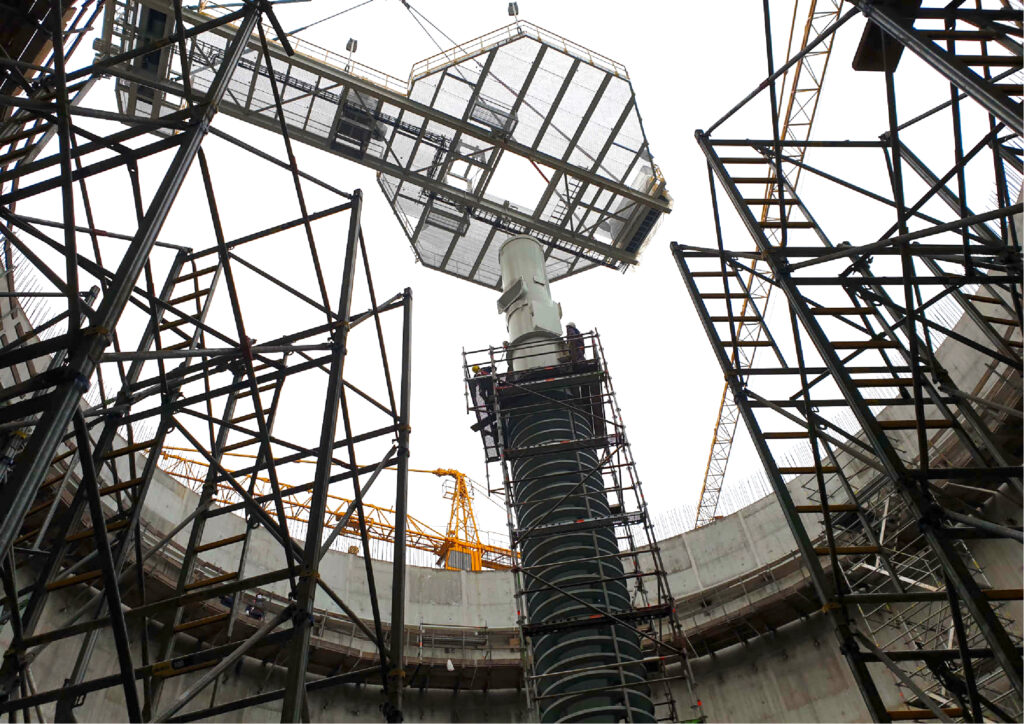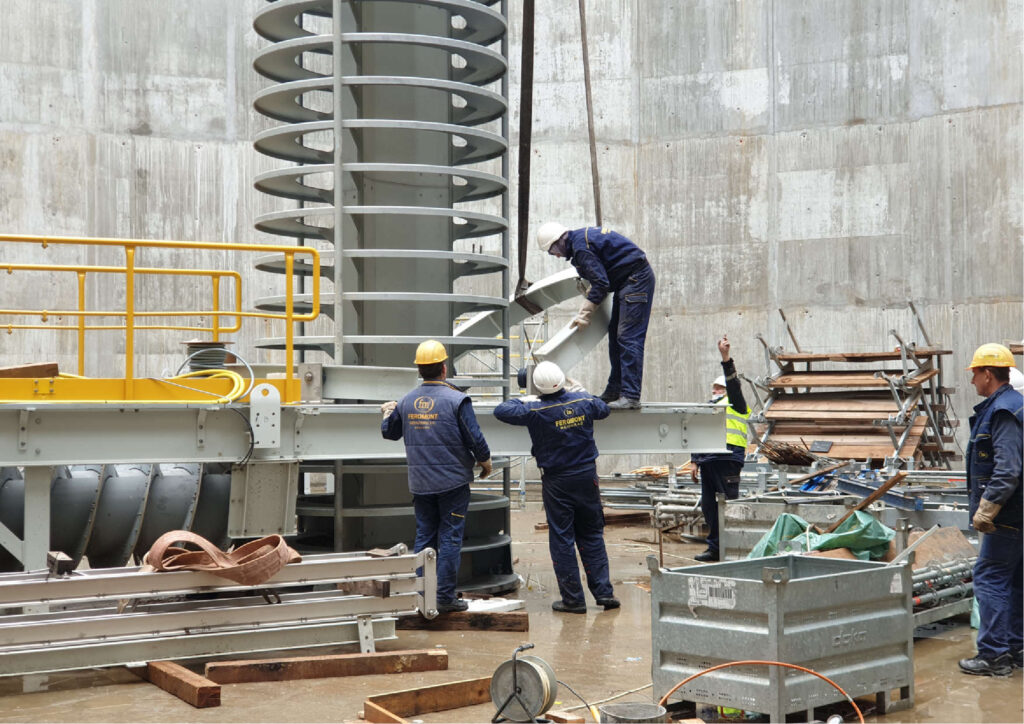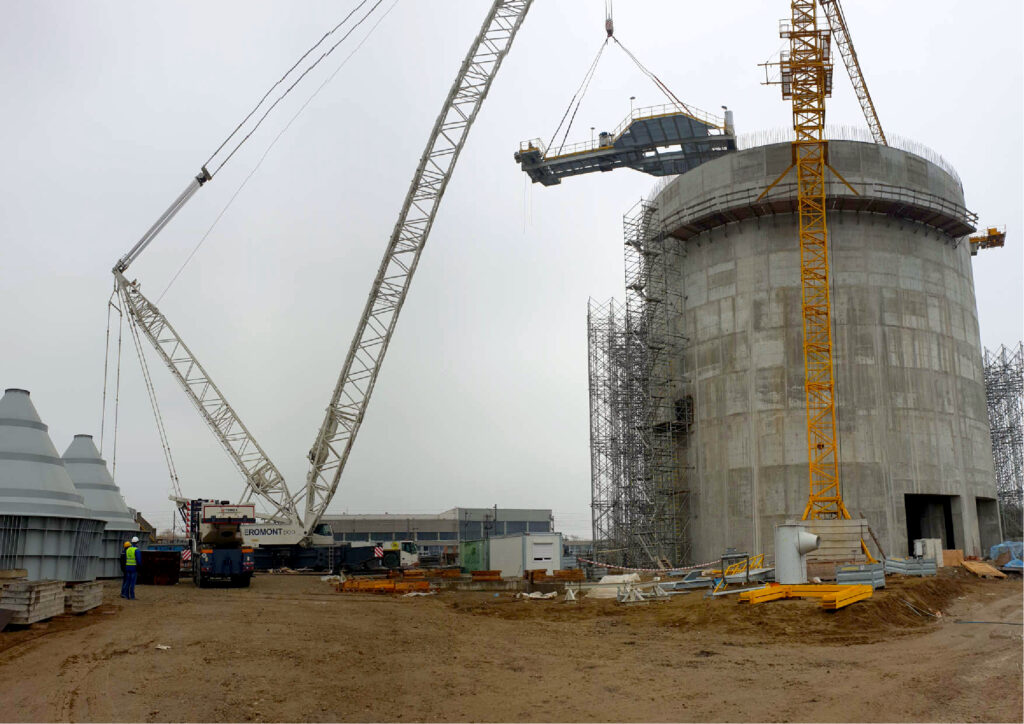New FGD Gypsum silo at Nikola Tesla power station
Getting ready for cold commissioning. This summer we will reach a new milestone with the cold commissioning of the new FGD Gypsum silo at the Nikola Tesla power plant in Beograd, Serbia. The gypsum silo is a part of the new desulphurization plant that Mitsubishi Heavy Industries is building for TPP Nikola Tesla plc. With a capacity of 10.000 m3 the gypsum silo is one of the largest of no less than 72 units and counting, that ESI has built around the world.
More flue gas desulphurization
The FGD Gypsum silo at the Nikola Tesla power station is one of several new installations in the Balkans. Most of the thermal power plants in the region will remain in operation in order to ensure sufficient and affordable power. In order to comply with today’s environmental regulations they need to be equipped with flue gas desulphurization (FGD) plants that remove sulfur dioxides from the exhaust of thermal power plants. By driving the flue gas through a milk of lime, the sulfur dioxide will stick to the wet lime stone and form FGD gypsum after dewatering on top of the FGD gypsum silo. The FGD gypsum serves as a basic material voor the construction industry. ESI’s FGD gypsum silos are supplied to the flue gas desulphurization plants built by Mitsubishi Heavy Industries in a number of Balkan countries.

Wider scope for a smaller footprint
Richard Spaargaren, sales director ESI, explains why the all-in-one concept of the FGD Gypsum silo fits perfectly in the situation at existing thermal power plants: “Most of the time there is very limited space available at power stations to accommodate for the mandatory new installations. However, the treatment of flue gas takes several steps before it splits up into clean exhaust and FGD gypsum. The FGD Gypsum silo combines dewatering of the gypsum slurry on top of the storage of the gypsum and the discharge into trucks underneath in one facility. By combining three basic functions in a fully automated logistic flow, we can achieve the smallest footprint possible.”
From design to production
Jan-Willem Hanskamp, manager Project Department ESI, reveals the thorough process that precedes the cold and final hot commissioning: “It all starts with the technical clarification in the contract phase, which can take quite some time to reach the right fit for all stakeholders. After the kick-off, the project is transferred to the project department for the engineering phase. In this phase, we design and document every aspect of the silo to give the customer full insight and to demonstrate quality control. After approval the production of all components takes place, concluded with factory acceptance testing (FAT) by the customer. Then we can transport everything from various production locations to the construction site, including clear Erection Manuals that enable local crews to assemble the mechanical parts.”

Onsite support
“Before all components are lifted into the silo, a thorough site inspection is carried out to ensure that everything meets the specifications. Then the famous Big Lift takes place, guided by one of our supervisors. After cabling and assembly of the mechanical parts by the local crew, the cold commissioning is done by a team of mechanical and electrical engineers from ESI. For several weeks all components are inspected and corrected in case of deviations or defects. At the same time, the project manager gives operator-trainings to the end-user teams. We are close to carrying out these final steps at the moment in the project at the Nikola Tesla power station”, says Jan-Willem.
Final delivery
Depending on the initial output of Mitsubishi’s desulphurization plant, the hot commissioning with bulk material will take place by autumn ’22. Thereafter, a team from ESI will return to the site for the last time to oversee the final stage of the delivery of another fully automated FGD Gypsum silo.
